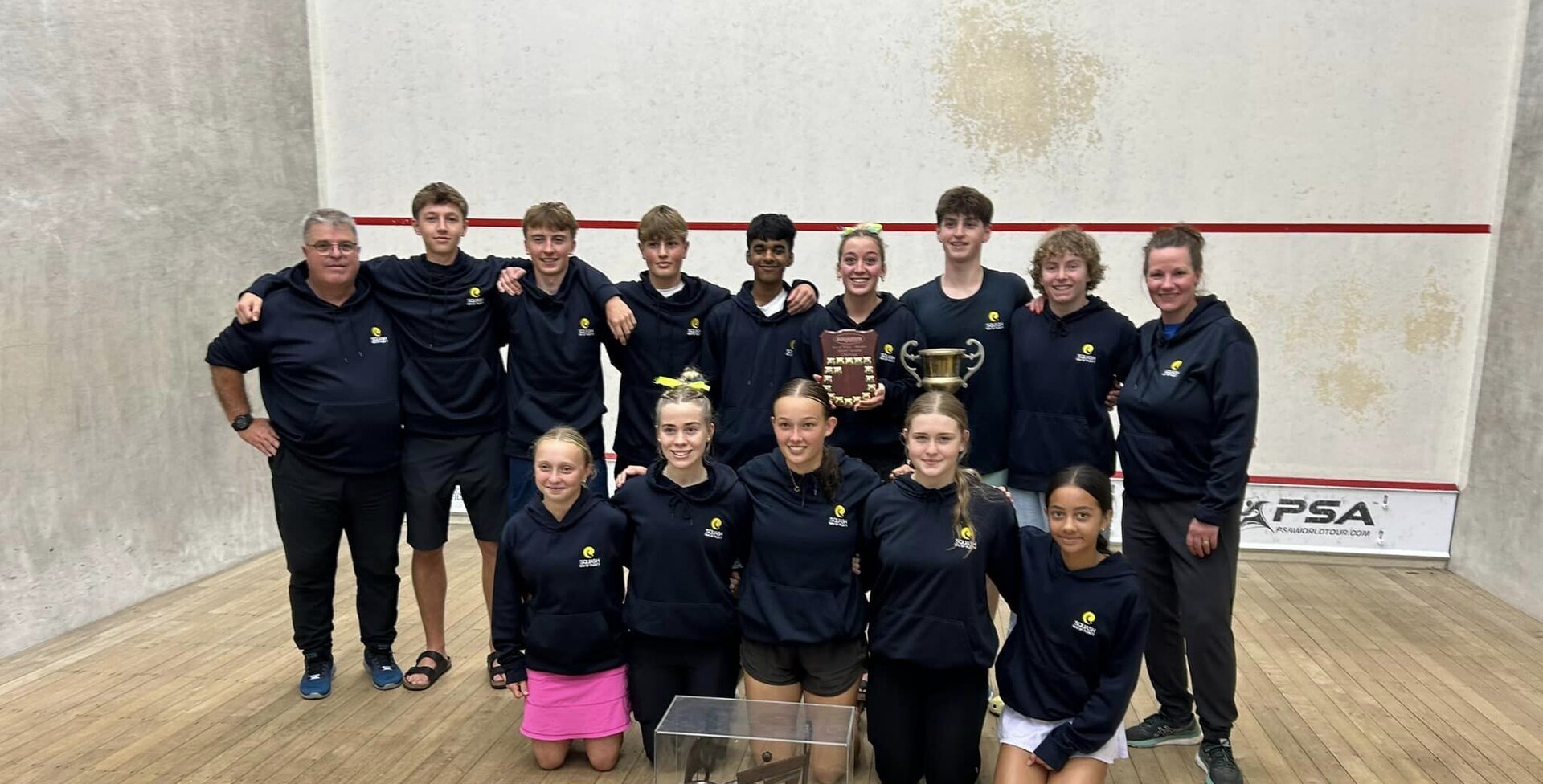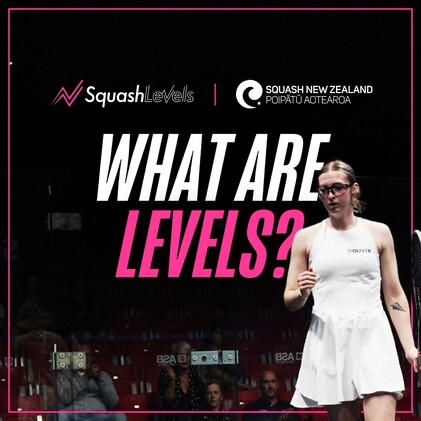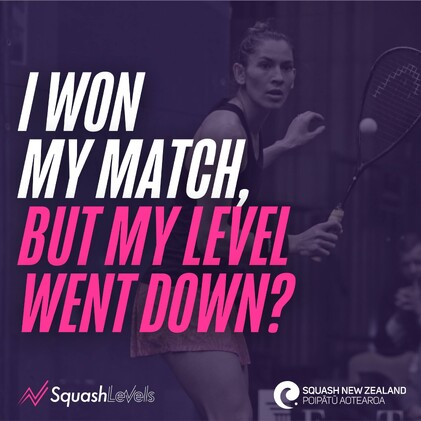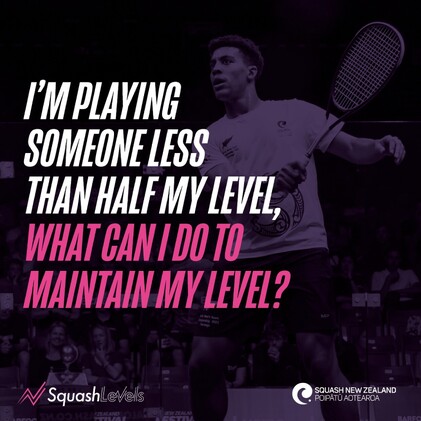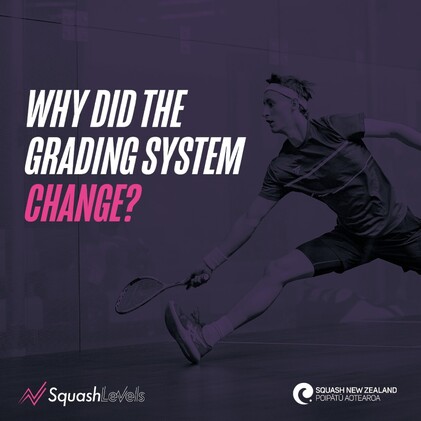Collacted FAQs and answers from Squash NZ
Answer - a ‘Level’ is a ratio that is measuring your current playing form.
SquashLevels adjusts your Level after each match based on the full game scores and how well you did against how you were expected to do against your opponent.
If you do much better than expected, you can move up a lot. Of course, that probably means your opponent did much worse than expected and can move down a lot too. If you both played as predicted, there would be little movement.
Example - If Player A is Level 500 and Player B is 1000 then Player B is twice as good as Player A and therefore expected to get twice as many points and win their games by around 11-6/11-6/11-5. The same would be expected for someone on 3000 playing someone on 6000.
Answer - even though you won, you did not play as well as expected based on your current level.
A key point to help understand why your level can go down even if you win, is understanding the difference between our old and new grading system which is we no longer have grading ‘points’ that are won or lost.
Your new ‘Level’ is measuring your current playing form. SquashLevels adjusts your Level after each match based on the full game scores and how well you did against how you were expected to do against your opponent.
This also means you may find your Level decreases if you win your match but not as well as you were expected to, while on the positive side this also means you can lose but your Level can increase if you played better than expected, meaning every match gives you something to play for.
If you check your match history, most likely you will see some matches you lost where your level increased too, so it all balances out in the end to find your true current playing level.
Answer – generally if they are around a third of your Level, you can keep the games close and extend the rallies and they can get to around 15-10 in each. But don’t let a game go to extra points (win-by-two) or give your opponent a game.
If a player is half your Level – you shouldn’t take them lightly and avoid an upset! Half means if you play your best squash, you should win around 15-7 15-8 15-8. If you get up easily in the first game then you’ve got a few points up your sleeve for the next game.
SquashLevels knows, based on millions of past results, that it expects the higher-level player to play down anywhere between 20%-40% and allows for this. If the difference between players is really big such as four or five times, it excludes the match completely. Generally, you can keep the games close but giving away a game may result in your level decreasing.
Because we’ve heard from the community this is an area causing a lot of concern, we’ve analysed results from over the last 12,000 New Zealand matches.
Matches where there was a 2.5x or greater difference between two players and the higher-level player had a decrease from the match outcome accounted for only half a percent of all matches played. These are rare occurrences!
It’s important to note that often player’s Levels can be adjusted down marginally (e.g. up to 0.4%) after a match because of pool calibration. These can often be mistaken for a Level decrease due to a match result, whereas in fact the match result has had no impact on player Levels.
See our various examples with the level change calculation explanations taken straight from SquashLevels.
Answer - by using a more accurate and universal rating system, SquashLevels, there are benefits to all players to ensure fairness in seeding events, selecting teams and interclub playing order, and for rankings at all levels and grades.
The ultimate goal of any rating system is to give an accurate depiction of every player’s playing level at any given time rather than focusing on past performance, which SquashLevels does extremely effectively.
The old system, while embedded in New Zealand squash culture, required constant reviewing and adjusting, and we know was misaligned across region, gender and age group. SquashLevels solves all these problems.
Finding people to play at a similar level is a problem amongst non-graded players. From 2025 non-competitive players are able to get a Level even if they don’t play in leagues or tournaments. They simply need to play against another player with a Level and they get their own provisional Level. The fact that box matches and organised club matches can be included from 2025, with a lower weighting than competitive matches, also help to include non-competitive players of all abilities.
Answer - where players in a pool are treated ‘as one’ and then compared with other pools such that their respective pool levels are equivalent. The comparisons are made by analysing the results of those players who play in more than one pool.
SquashLevels is a global system and part of its nightly processing is to calibrate the levels of players across clubs, regions, countries and even time. This process chips away at the levels of players as groups or 'pools', whether up or down, with the goal to ensure that player levels are equivalent across the entire SquashLevels system.
The starting levels of both players and pools are worked out and set but after that they can only be adjusted a very small amount each match. To be able to factor in these dynamic adjustments needed over time, the system uses a ‘level pump’. This effectively runs throughout the calibration process adding or reducing each player’s level after each match to make the overall adjustments needed. They must be small enough to be virtually unnoticed but large enough that they have enough effect. If you look at the match review page you will see at the bottom an allowance for this dynamic adjustment.
Read more about how calibration works on the SquashLevels website https://support.squashlevels.com/.../7713979000221-How...
